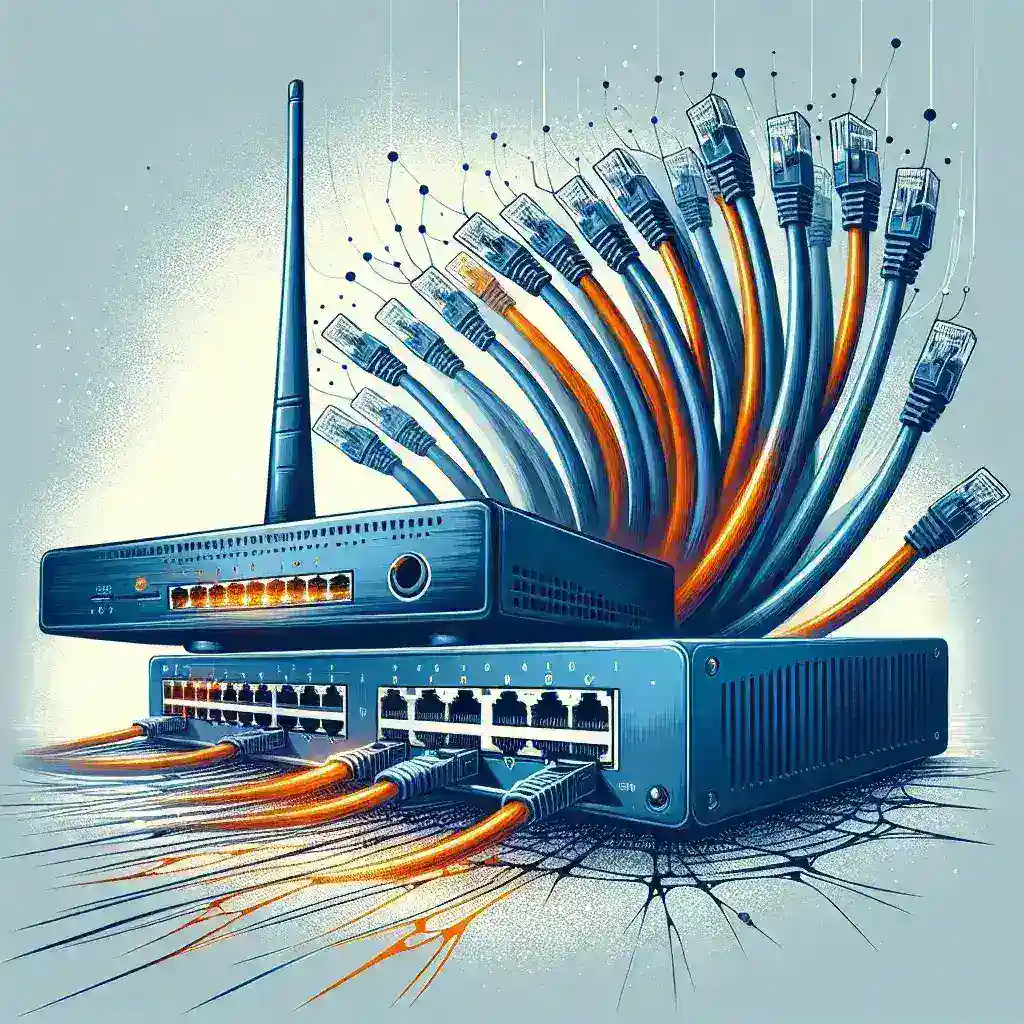
What is the difference between an Ethernet router and a network switch?
In the realm of networking, understanding the difference between an Ethernet router and a network switch is essential for anyone looking to set up or optimize their network. While both devices are pivotal in network management, they serve distinct purposes and offer unique functionalities. This article delves into the core differences between an Ethernet router and a network switch, helping you make informed decisions for your networking needs.
| Feature | Ethernet Router | Network Switch |
|---|---|---|
| Function | Connects multiple networks | Connects devices within a single network |
| IP Addressing | Assigns IP addresses | Uses MAC addresses |
| Routing | Routes data between different networks | Forwards data within a network |
| Security | Typically offers more security features | Limited security features |
| Usage | Uses Network Address Translation (NAT) | Primarily used for traffic management |
What is an Ethernet Router?
An Ethernet router is a device that connects multiple computer networks. It manages the data traffic between these networks by routing data packets to their intended IP addresses. Routers are crucial in enabling communication between different networks, such as a local area network (LAN) and the internet.
Key Functions of an Ethernet Router
- Routing: The primary function of a router is to route data between different networks. It helps in directing data packets to their specific destinations.
- Network Address Translation (NAT): Routers use NAT to convert private IP addresses within a LAN into a public IP address, allowing for internet access.
- Firewall: Many routers come with built-in firewalls that help in filtering incoming and outgoing traffic, providing an extra layer of security.
- DHCP Server: Routers often include a DHCP (Dynamic Host Configuration Protocol) server, which automatically assigns IP addresses to devices on a network.
Benefits of Using a Router
- Enhanced Security: With features like NAT and firewalls, routers offer superior security compared to network switches.
- Multiple Network Management: Routers are designed to manage traffic between different networks, making them ideal for complex network setups.
- Internet Connection Sharing: Routers allow multiple devices to share a single internet connection.
What is a Network Switch?
A network switch operates within a single network, primarily focusing on data packet forwarding. Switches are essential in managing data flows between devices on the same LAN, ensuring efficient data transfer and communication.
Key Functions of a Network Switch
- Data Forwarding: Unlike routers, switches use MAC addresses to forward data packets to the appropriate devices within a network.
- Port Management: Switches come with multiple ports, allowing several devices to connect and communicate efficiently.
- VLAN Support: Some advanced switches support VLANs (Virtual Local Area Networks), which help in segmenting a network into smaller, more manageable sections.
- Network Efficiency: Switches help in reducing network congestion by ensuring data packets are only sent to their intended recipient devices.
Benefits of Using a Switch
- Improved Network Performance: By efficiently managing data traffic, switches enhance overall network performance.
- Cost-Effective: Switches are generally more affordable compared to routers and provide an economical solution for internal network management.
- Easy Scalability: Switches allow for easy network expansion by adding more devices.
Choosing Between a Router and a Switch
When deciding between an Ethernet router and a network switch, consider the specific needs of your network. Routers are ideal for connecting different networks and providing internet access, while switches are excellent for managing internal network traffic.
Typical Use Cases
- Home Networks: A router is essential for connecting home devices to the internet, while a switch can be used to expand wired connections within the home.
- Small to Medium Businesses (SMBs): SMBs can benefit from both devices, using routers for internet connectivity and switches for managing office network traffic.
- Large Enterprises: In large enterprises, both routers and switches play critical roles. Routers connect different branches and provide internet access, while switches manage the internal traffic efficiently.
Conclusion
Understanding the difference between an Ethernet router and a network switch is key to setting up an efficient and secure network. Routers are best suited for connecting and securing multiple networks, while switches excel in managing traffic within a single network. By knowing the functions, benefits, and typical use cases for each device, you can make informed decisions to meet your specific networking needs.
